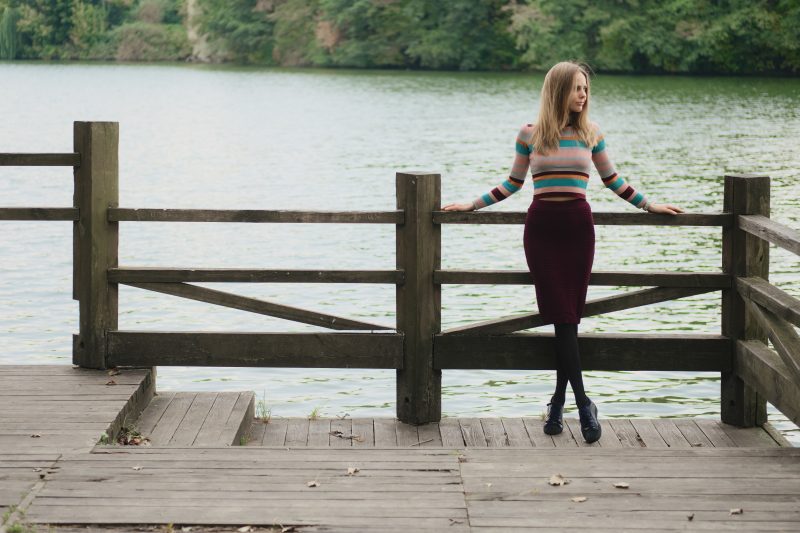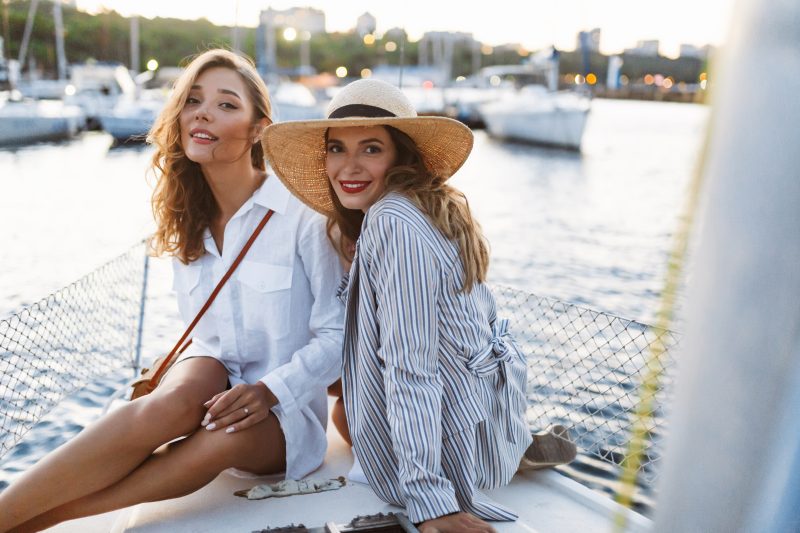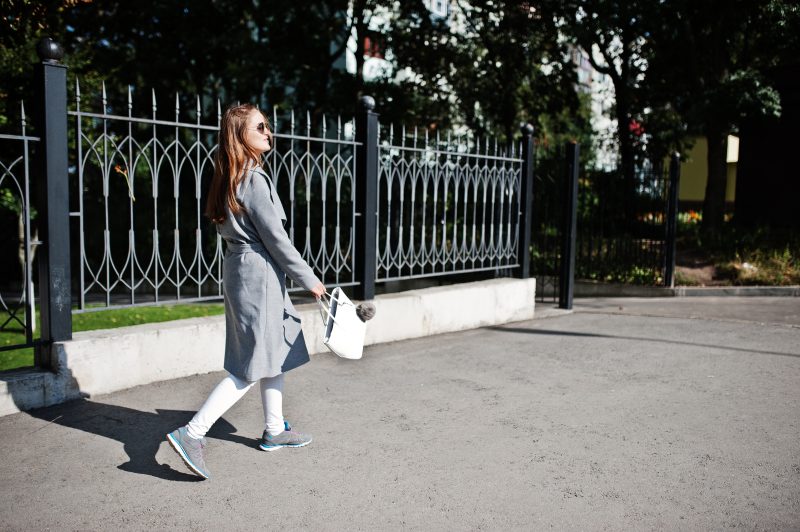Look, I need to talk about something that’s been haunting me since I moved to Portland and started getting invited to work events that aren’t just “wear whatever, it’s casual Friday but on a Tuesday.” Last month, I got an invitation to this industry mixer thing – you know, the kind where graphic designers pretend to network while drinking overpriced wine – and right there on the fancy cardstock was the phrase that makes my eye twitch: “smart casual attire requested.”
I stared at those two words for like twenty minutes. Smart casual. What does that even mean? It’s like saying “be sophisticated but not really” or “dress up but also don’t.” I texted my friend Sarah, who went to school in London and somehow always looks put-together without trying, and she just laughed at me. “Oh honey,” she said, “that’s such a British thing. Good luck.”
Turns out she was right – this whole smart casual nightmare is basically imported from Britain, where they’ve perfected the art of making dress codes as confusing as possible. It’s like they took all their cultural anxiety about class and appropriate behavior and channeled it into two words designed to make you question every clothing choice you’ve ever made.
The thing is, I actually care about this stuff now in a way I never did in college. Back then I could show up to anything in black jeans and a vintage band tee and call it a day. But now I’m trying to look like a professional adult person who has her life together, which means I can’t just throw on whatever’s clean and hope for the best. Except smart casual makes that impossible because it’s not actually giving you any information.
I mean, think about it. “Casual” I can do – that’s jeans, sneakers, whatever. “Smart” sounds like business attire, right? Blazers and button-down shirts and shoes that cost more than my grocery budget. But “smart casual” is asking you to somehow split the difference, and that difference is apparently where all fashion sense goes to die.
After that industry mixer disaster – where I showed up in what I thought was the perfect middle ground outfit only to find everyone else dressed completely differently – I decided I needed to figure this out. Not just for my own sanity, but because this keeps happening. Portland’s creative scene is weirdly obsessed with dress codes that don’t actually mean anything, and I refuse to spend every networking event wondering if I look like I misunderstood the assignment.
So I did what any reasonable person would do: I became mildly obsessed with cracking this code. I started paying attention to what people wore to different events, asking questions (carefully, because nobody wants to seem clueless), and basically treating it like a design problem I needed to solve.
Here’s what I figured out: smart casual isn’t actually about clothes. It’s about context. It’s about showing up looking like you understand what kind of event this is and who’s going to be there. Which is incredibly British when you think about it – turning getting dressed into a test of your social awareness.
The location matters way more than anyone tells you. That industry mixer I mentioned? It was at this trendy hotel downtown, the kind of place where even the bathroom attendant looks more stylish than me on my best day. Smart casual at a place like that means expensive casual – like those jeans that cost $200 but look exactly like regular jeans, paired with a silk blouse and shoes that hurt your feet but photograph beautifully.
But smart casual at my friend Emma’s birthday party at that brewery in Southeast? Totally different. There it meant dark jeans without holes, a cute top that wasn’t a t-shirt, and boots that could handle walking on uneven sidewalks after a few drinks. Same dress code, completely different execution.
I learned this the hard way at three different events last spring. Same basic outfit – midi skirt, nice top, low heels – and somehow I was overdressed at one, underdressed at another, and apparently perfectly appropriate at the third. The only variable was where they were happening and who was hosting. It was like that outfit existed in three different universes simultaneously.
The age thing is huge too. I went to this gallery opening where the average age was probably fifty-something, and all the younger people there looked like they were trying too hard. The women who looked most appropriately dressed were wearing stuff my mom would approve of – nice pants, structured blazers, shoes that weren’t sneakers. But at a similar event with a younger crowd, that same look would’ve screamed “I don’t understand what’s cool anymore.”
And don’t even get me started on the gender differences. Guys have it so much easier with this stuff. Smart casual for men is basically just “not a t-shirt and not a suit” – button-down shirt, chinos or dark jeans, shoes that aren’t athletic wear. Done. Meanwhile, I’m over here trying to figure out if a jumpsuit reads as too dressy or too casual, whether I can wear sneakers if they’re leather and expensive-looking, and if adding a blazer makes everything look more professional or more like I’m trying to cosplay as someone with a real job.
I’ve made so many mistakes figuring this out. Wore a sundress to what turned out to be an indoor, air-conditioned event where everyone else was in long sleeves. Showed up in my nice blazer to something that was way more casual than I expected and spent the whole time feeling like I was interviewing for jobs. Bought this jumpsuit thinking it was the perfect smart casual piece only to realize it makes me look like I’m either going to a wedding or to fix someone’s plumbing, with no middle ground.
The worst part is how much mental energy this takes. I used to just put on clothes and leave the house. Now I’m standing in front of my closet doing this weird calculation – who’s hosting this thing, what kind of venue is it, what time of day, what’s the weather, who else is likely to be there, and somehow divine from all that information what combination of items from my very limited wardrobe will make me look like I belong.
I’ve developed this system now where I try to mix formality levels. Like, if I’m wearing something more casual on bottom – good jeans, cute pants that are basically fancy sweatpants – I’ll go more dressy on top with a blouse or a sweater that clearly cost more than twenty dollars. Or if I’m wearing a skirt that feels dressier, I’ll pair it with a more casual top and shoes I can actually walk in.
The accessories thing took me forever to figure out, but it’s actually kind of genius. You can take a pretty basic outfit and make it look more intentional with the right bag, jewelry, or shoes. I have this one necklace I bought at a vintage store that somehow makes everything look more pulled-together, even though it cost me like fifteen dollars and I’m pretty sure it’s not real silver.
Color is another whole thing. I used to wear a lot of black because it felt safe and went with everything, but apparently head-to-toe black can read as either too formal or too goth depending on the situation. Now I try to add one piece that’s not black or gray, but nothing too bright because that can look like you’re trying to be the center of attention, which is apparently also wrong.
I’ve also learned to always have a backup plan. Like, bringing a cardigan I can put on or take off depending on how dressed up everyone else is. Or wearing shoes I can actually walk in but bringing different shoes in my bag just in case. It’s exhausting but it’s better than spending an entire event feeling like you got the dress code completely wrong.
The weirdest thing is when you actually nail it. When you show up and realize you’ve somehow hit that perfect sweet spot where you look appropriate but not like you stressed about it for three days beforehand. Nobody compliments your outfit – they just treat you like you belong there. Which I guess is the point, but it’s also kind of anticlimactic after all that mental effort.
I went to this work thing last month – smart casual, naturally – wearing dark jeans, a silk blouse I found on sale at Zara, and these ankle boots that hurt my feet but look expensive. Added my magic vintage necklace and called it good. Spent the whole night having normal conversations instead of wondering if people were judging my outfit choices. It was amazing.
But here’s the thing I’ve realized: smart casual isn’t actually about finding the perfect outfit. It’s about demonstrating that you can read social cues and adjust accordingly. It’s about showing that you understand this isn’t a super formal event, but it’s also not a place where you can roll up in your weekend clothes. You’re being asked to care about how you look, but not too much.
Which is very Portland, actually. We’re all supposed to look effortlessly cool while also clearly putting thought into our appearance. Smart casual is just the formal name for that impossible balance we’re all trying to strike anyway.
I still hate it as a dress code because it’s basically asking you to be a mind reader. But I’ve gotten better at the guessing game, and I’ve stopped taking it so personally when I get it wrong. Sometimes you show up overdressed, sometimes underdressed, and sometimes you nail it without really knowing why. As long as you’re clean and your clothes fit reasonably well, you’re probably not going to be the worst-dressed person there.
Plus, I’ve noticed that the people who are most judgmental about this stuff are usually the ones who are just as confused as everyone else. We’re all just making it up as we go along and hoping for the best.



